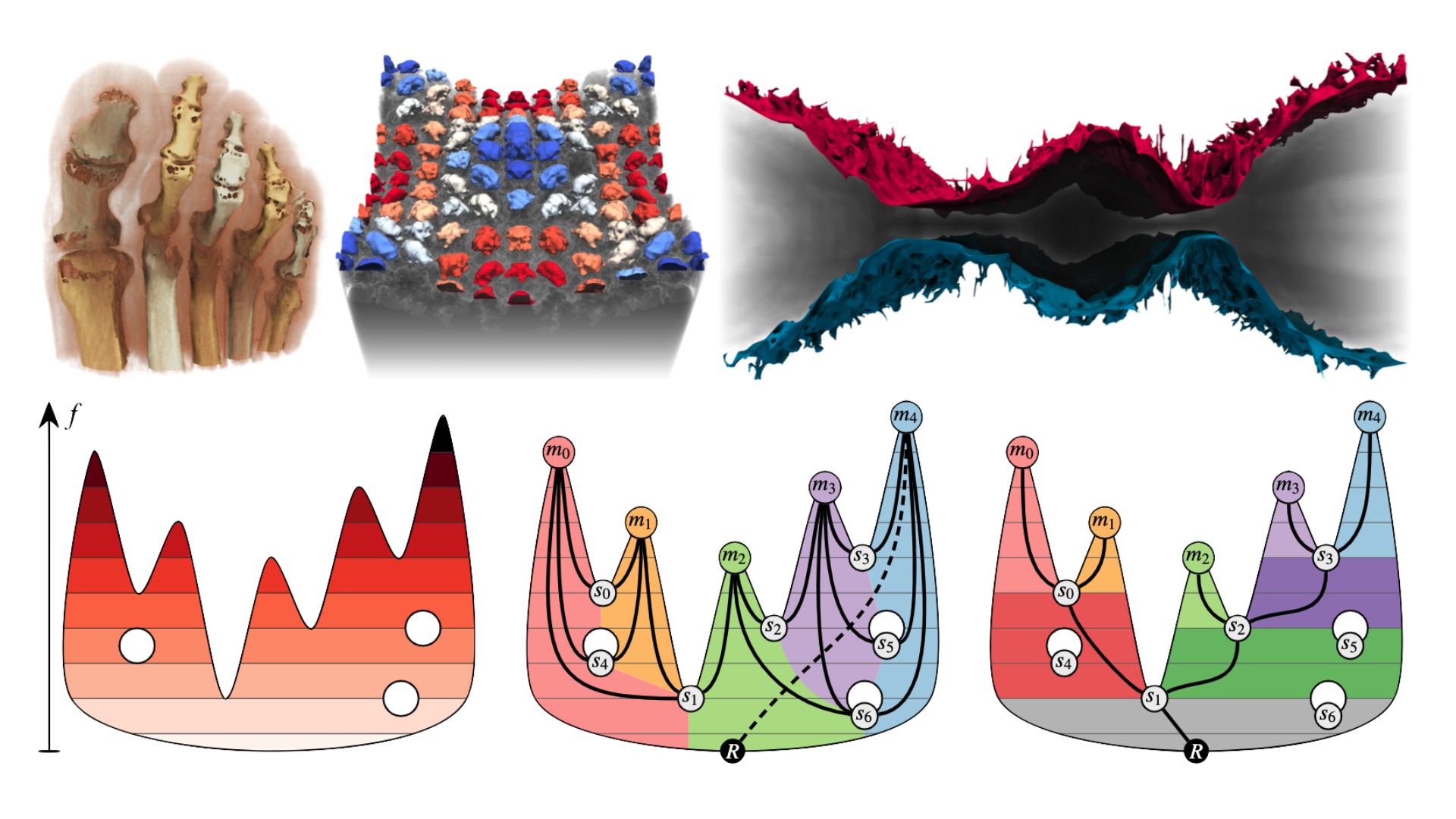ExTreeM: Scalable Augmented Merge Tree Computation via Extremum Graphs
Jonas Lukasczyk, Michael Will, Florian Wetzels, Gunther H Weber, Christoph Garth
DOI: 10.1109/TVCG.2023.3326526
Room: 106
2023-10-26T03:48:00ZGMT-0600Change your timezone on the schedule page
2023-10-26T03:48:00Z

Fast forward
Full Video
Keywords
Scalar field topology, merge trees, persistence pairs, high performance computing.
Abstract
Over the last decade merge trees have been proven to support a plethora of visualization and analysis tasks since they effectively abstract complex datasets. This paper describes the ExTreeM-Algorithm: a scalable algorithm for the computation of merge trees via extremum graphs. The core idea of ExTreeM is to first derive the extremum graph G of an input scalar field f defined on a cell complex K, and subsequently compute the unaugmented merge tree of f on G instead of K; which are equivalent. Any merge tree algorithm can be carried out significantly faster on G, since K in general contains substantially more cells than G. To further speed up computation, ExTreeM includes a tailored procedure to derive merge trees of extremum graphs. The computation of the fully augmented merge tree, i.e., a merge tree domain segmentation of K, can then be performed in an optional post processing step. All steps of ExTreeM consist of procedures with high parallel efficiency, and we provide a formal proof of its correctness. Our experiments, performed on publicly available datasets, report a speedup of up to one order of magnitude over the state-of-the-art algorithms included in the TTK and VTK-m software libraries, while also requiring significantly less memory and exhibiting superior scaling behavior.